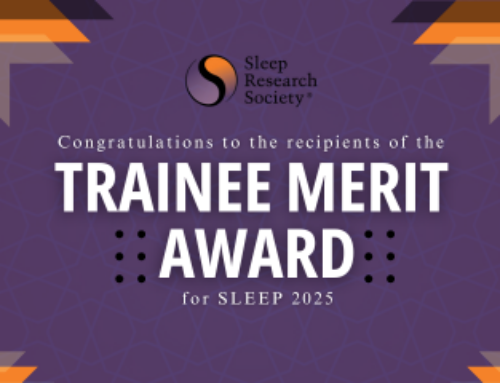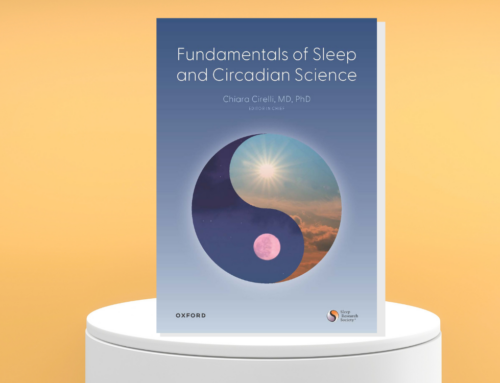It is with great sadness that the Sleep Research Society announces the death of Dr. Adrian R. Morrison on August 4, 2021. Adrian was one of the pioneers of modern investigations of neurobiological mechanisms controlling sleep. In 1995, he served as President of the Sleep Research Society, and then as President of the World Federation of Sleep Research Societies (2001-2003). During his presidency, the SRS founded the tradition of holding Club Hypnos meetings at the annual meetings of the Society for Neuroscience (SFN). Club Hypnos provided a springboard for another very popular event at the annual SFN meeting, the Sleep and Circadian Biology Data Blitz.
Both have provided a great scientific and social bridge between sleep researchers and those studying other aspects of neuroscience. Club Hypnos events now also occur at other meetings, including our own annual meeting of the Associated Professional Sleep Societies. In 2002, Dr. Morrison received the Sleep Research Society Distinguished Scientist Award.
Dr. Morrison started his early neurobiological studies of sleep when there were very few investigators worldwide engaged in this area of research. His particular interest was REM sleep. He did extensive studies using the REM sleep without atonia model, in which lesions in the pontine tegmentum result in intense and often seemingly organized motor behaviors during REM sleep. Characterization of this model preceded by many years the recognition of a neurological condition in humans that is now known as the REM Behavior Disorder. Dr. Morrison also demonstrated that the PGO waves that occur just before and during REM sleep signify the activation of an internal alerting mechanism. Separately, he had recognized that the English bulldog was a natural animal model of obstructive sleep apnea. More generally, Dr. Morrison argued in favor of important forebrain mechanisms modulating sleep at the time when the prevailing thought was that sleep was principally controlled by the brainstem. His later work focused on the limbic system, specifically the modulation by the amygdala of brainstem sleep circuitry.
Most of Dr. Morrison’s early work was conducted using the cat as a model, the dominant animal model for sleep research at the time. He courageously and vocally defended a fellow neuroscientist who was publicly accused and investigated for cruelty to animals in his research. Adrian’s background as a veterinarian gave him unique credibility in this episode. Later, following an attack on the laboratory of Dr. John Orem, Adrian served on a NHLBI committee convened to review Orem’s laboratory, which was found to be exemplary. This and Adrian’s other activities in support of the humane use of animals in biomedical research provoked a raid on his laboratory by the Animal Liberation Front (ALF) and attracted the attention of PETA (People for the Ethical Treatment of Animals). Despite the calumny to which he was subjected, he never shrank from the challenge of advocating for the importance of animals in biomedical research. He organized the neuroscience community around this issue and engaged in major efforts at the level of the National Institute of Mental Health to promote and support animal research. In recognition of these efforts, he received numerous awards, including the American Association for the Advancement of Science Scientific Freedom and Responsibility Award (1991). He also published a book titled “An Odyssey with Animals. A Veterinarian’s Reflections on the Animal Rights & Welfare Debate,” in which he forcefully and eloquently argued in support of the humane use of animals in biomedical research.
Dr. Morrison played not only a major national and international role but made major contributions to the development of sleep research programs at the University of Pennsylvania (Penn). He was one of a small group of Penn faculty who got together in the mid-1980s to plan for development of sleep research in this institution. He was one of the project leaders in a successful application to obtain NIH funding to establish at Penn a Specialized Center of Research in obstructive sleep apnea. He was a member of the founding group of scientists that in 1991 established a new interdepartmental entity known as the Center for Sleep and Respiratory Neurobiology. At the time, it became the first academic center dedicated to sleep research. The Center was subsequently renamed the Center for Sleep and Circadian Neurobiology and most recently has become the Chronobiology and Sleep Institute. Dr. Morrison’s role in these developments was recognized by naming the keynote lecture at the annual Penn sleep research retreat the Adrian Morrison Lecture.
Dr. Morrison was very committed to research training. He mentored several individuals who went on to successful careers as independent investigators. This includes Joan Hendricks, Richard Horner, and Larry Sanford. Joan subsequently became the Dean of the Penn School of Veterinary Medicine.
Dr. Morrison was very much a family man who loved the rural area outside Philadelphia where he grew up. He describes his formative childhood experiences wonderfully in his book Brandywine Boy. He returned to live in the Brandywine area after he became an Emeritus Professor.
Dr. Morrison lived life to the fullest. One of the founders of the Sleep Research Society, he made a huge contribution to our field and to development of programs at the University of Pennsylvania. He authored over 130 research articles, reviews and chapters, edited 7 major books on the neuroscience of sleep, published more than 30 position papers and editorials on the subject of the humane use of animals in research, and another at least 30 letters to editors and newspaper articles on the same subject. He will be missed by his colleagues, all of whom held him in the highest regard.
Obituary written by Drs. Leszek Kubin, Richard Ross, and Allan Pack.






